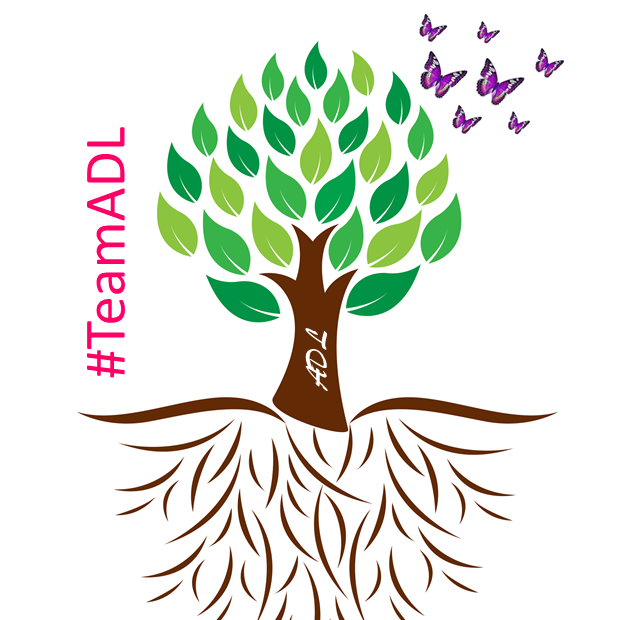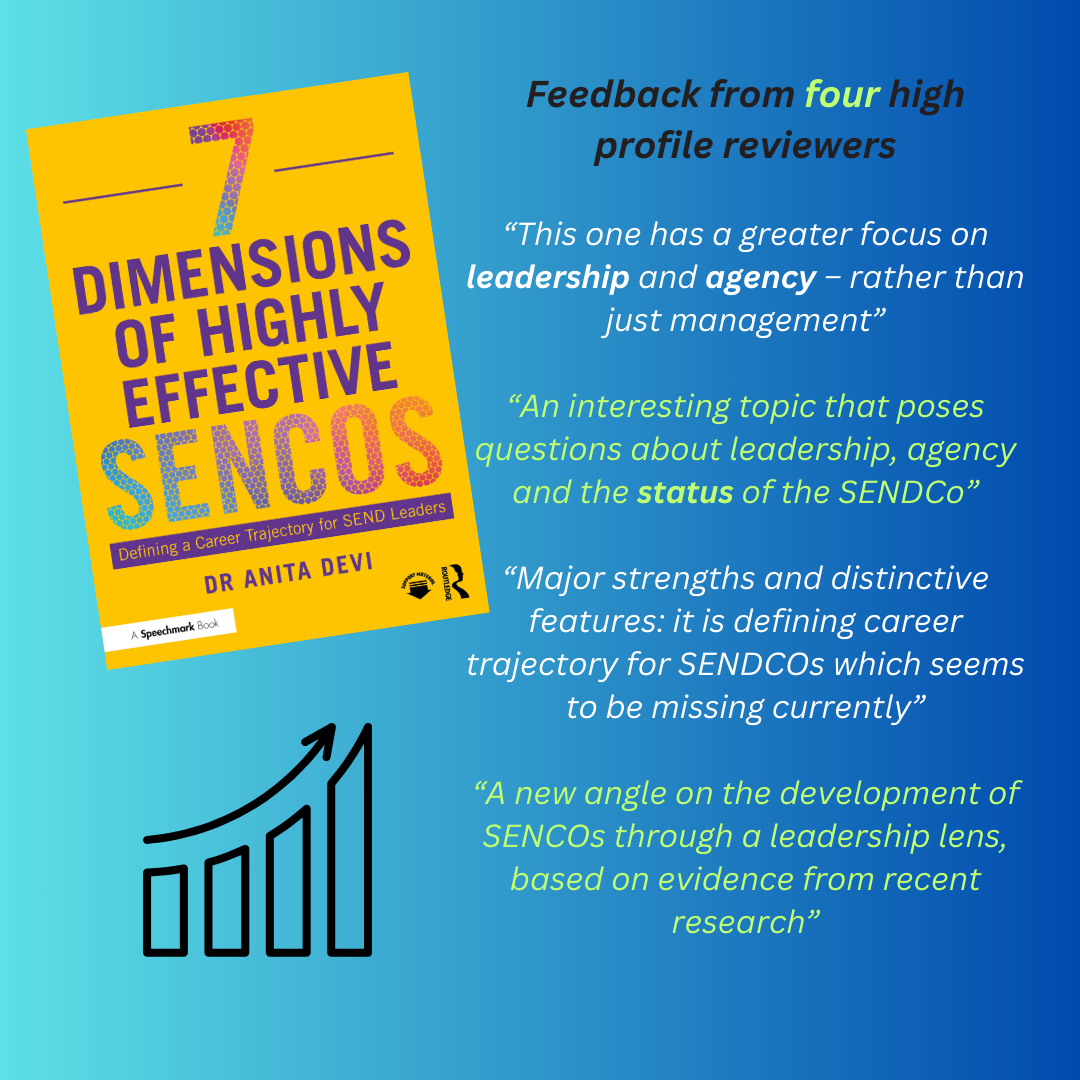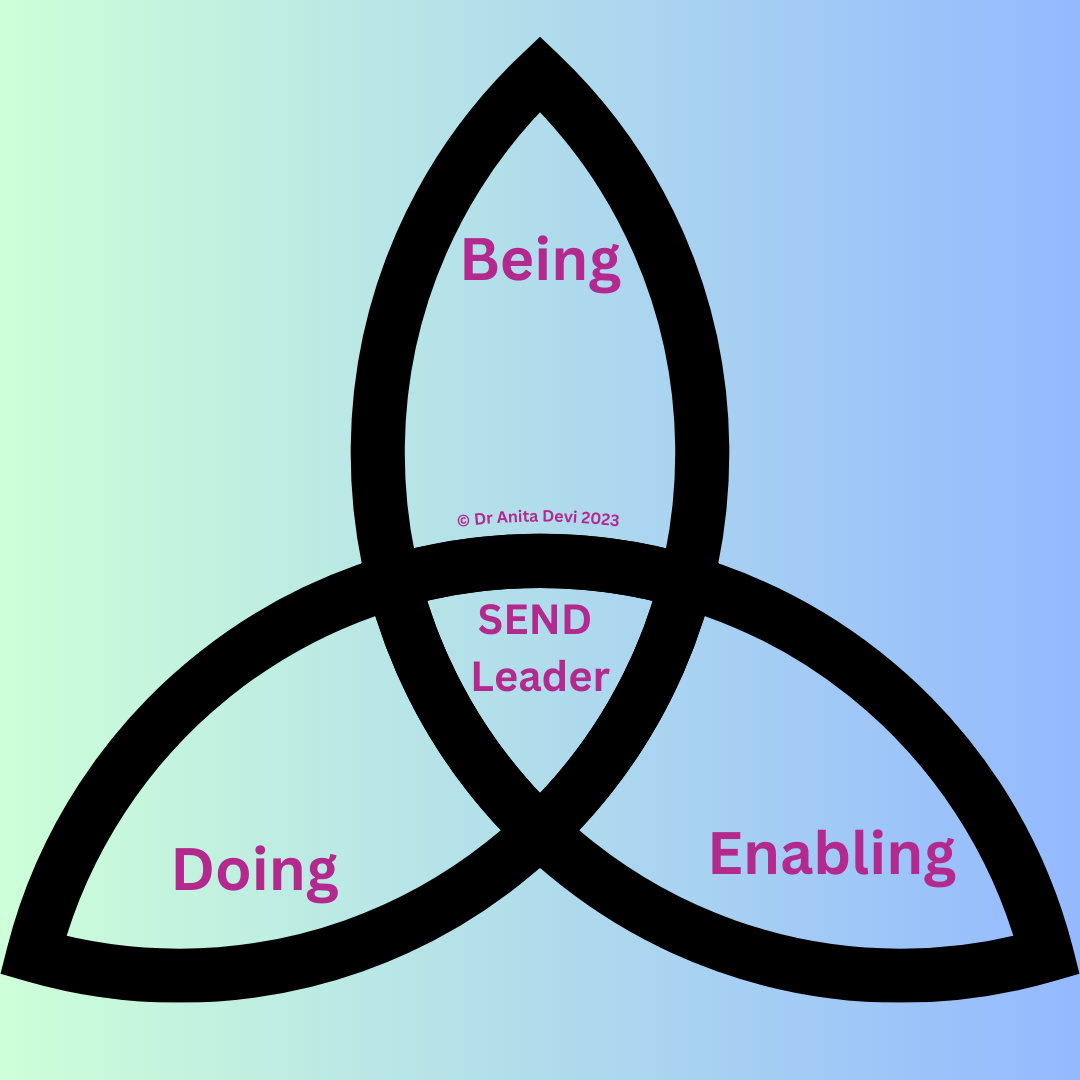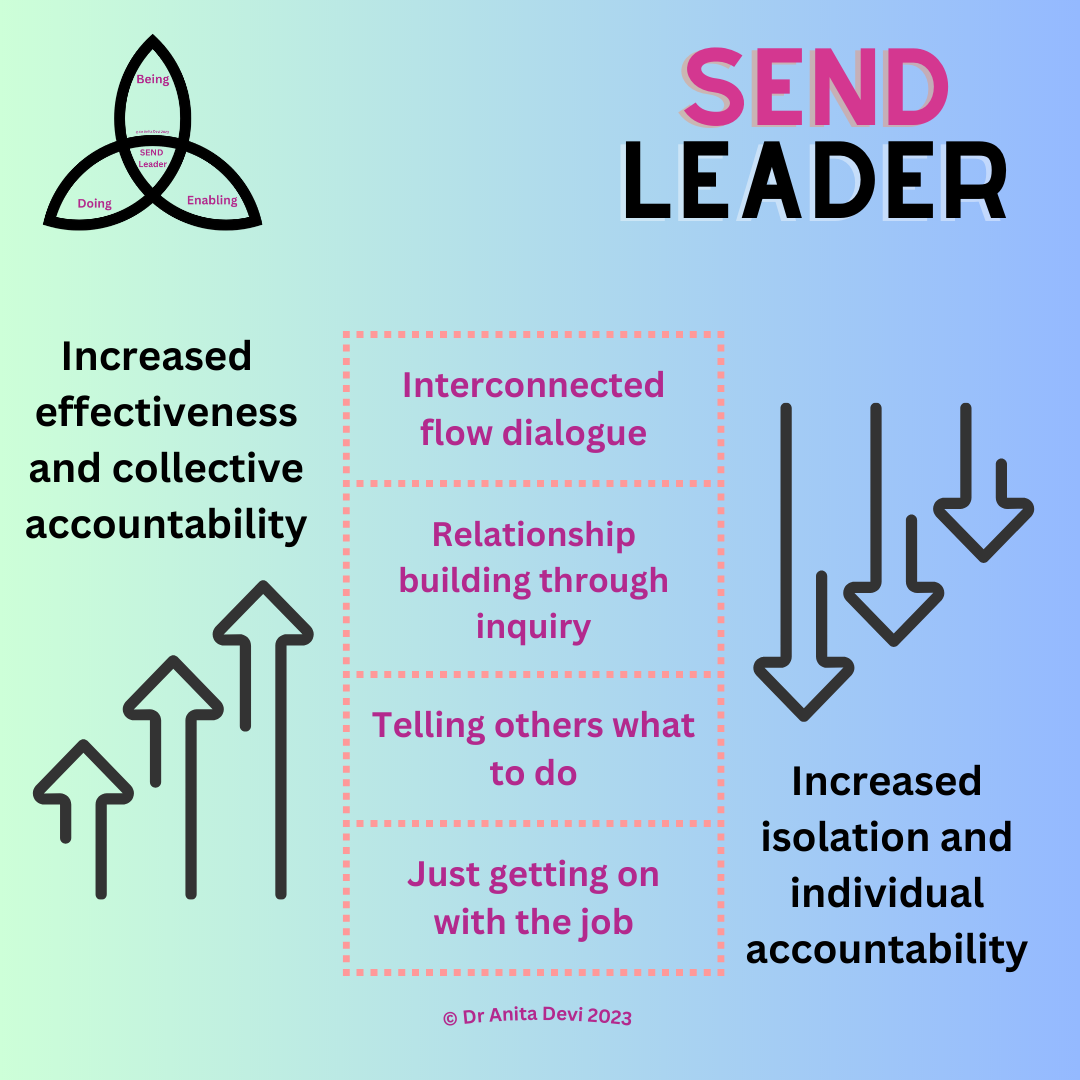Identity
How do SENCOs / SEND leaders define their identity? What impact does this have on their work and role satisfaction?

How do SENCOs / SEND leaders define their identity? What impact does this have on their work and role satisfaction?
What agency do SENCOs / SEND leaders leverage in-house and externally? What could be different?
How do SENCOs build teams? Who are they connecting and interacting with most? What needs to change?





For far too long, the SENCO / SEND Leader role has focused solely on doing. However, what we do for others and ourselves first and foremost emerges from who we are - our 'identity'. Our next priority is 'agency' and enabling others on our team. Finally, doing needs to ensure not just that we are modelling, but that there is efficiency, effectiveness and economy. Some may argue that the doing comes before enabling. Enabling is distinct and vital for whole setting engagement. A big part of doing is extending those enabled through monitoring and best practice research.
This is the
BED implies rest, as Dr Anita Devi repeatedly shares: working from rest and not to rest, that's we retain and support wellbeing.

At the heart of relationship is intentional communication and choice. It is all too easy to suggest, "I'll just get on with it". This may appear to be a quicker approach, but in the long run, it doesn't help to build teams. A directing style of leadership widens the team input, but doesn't contribute to sustainability and innovation. Inquiry leading to an interconnected flow dialogue is vital to ensure all take responsibility (i.e. there is collective accountability) and increased effectiveness through innovation.